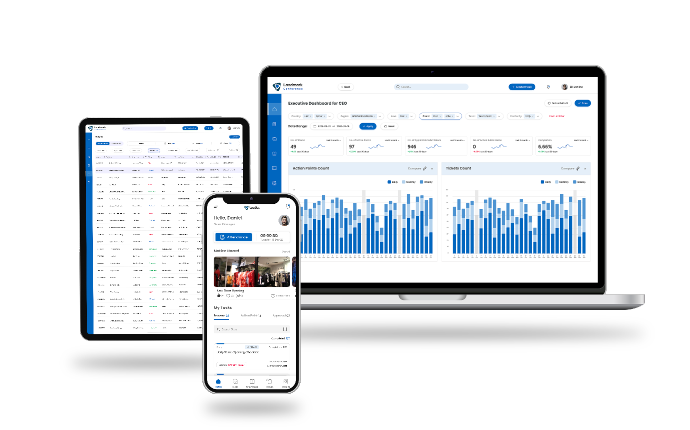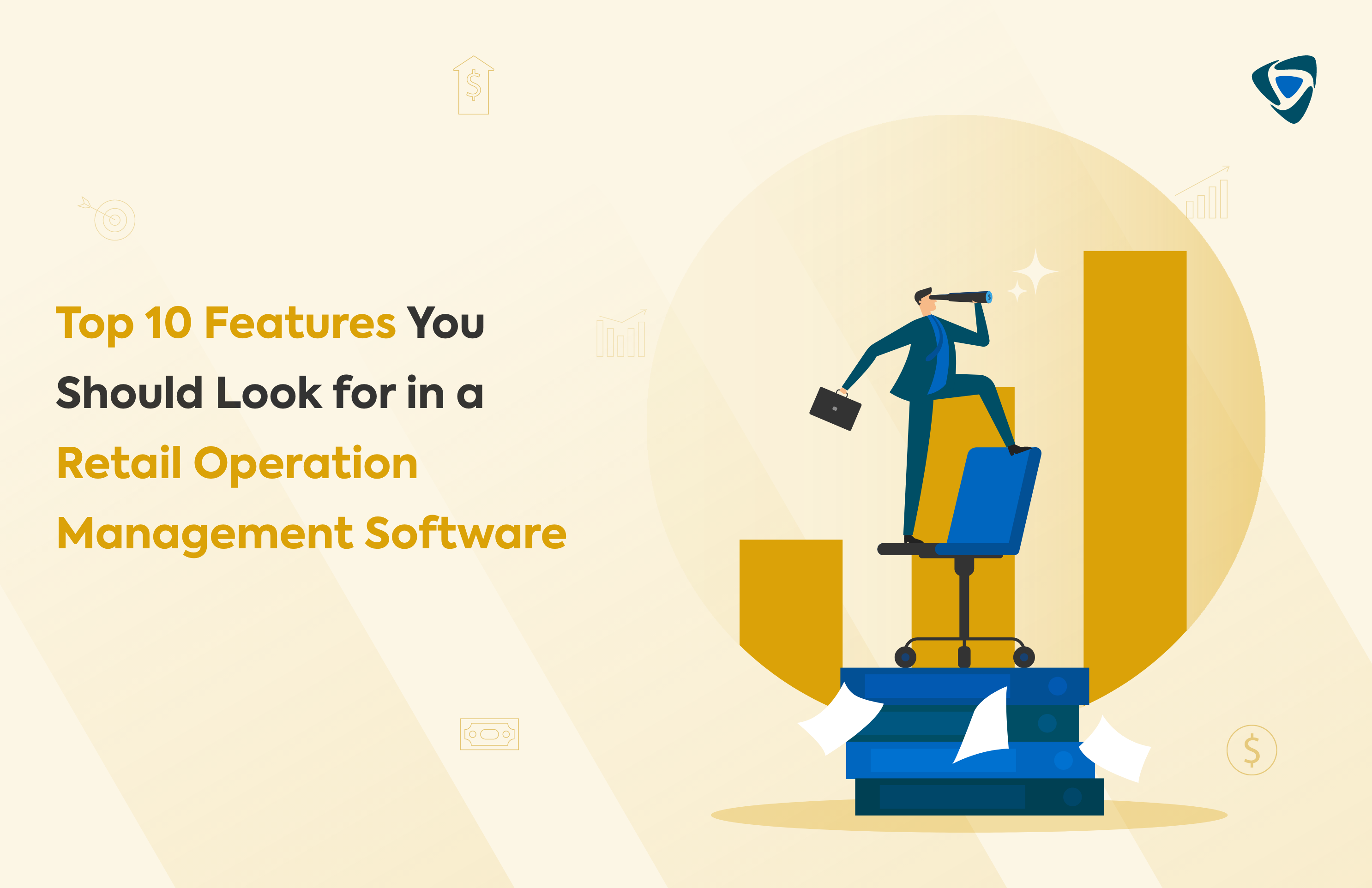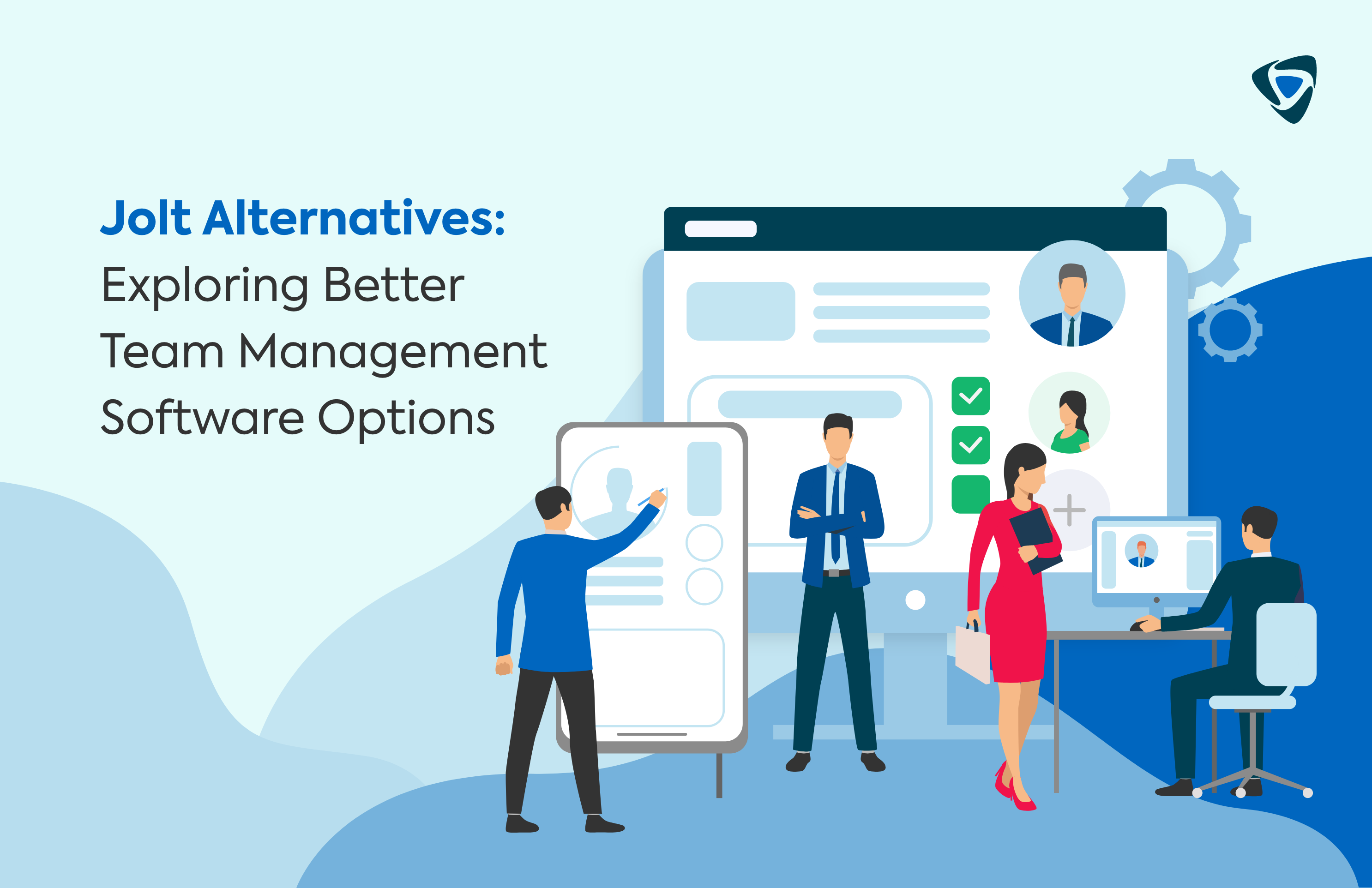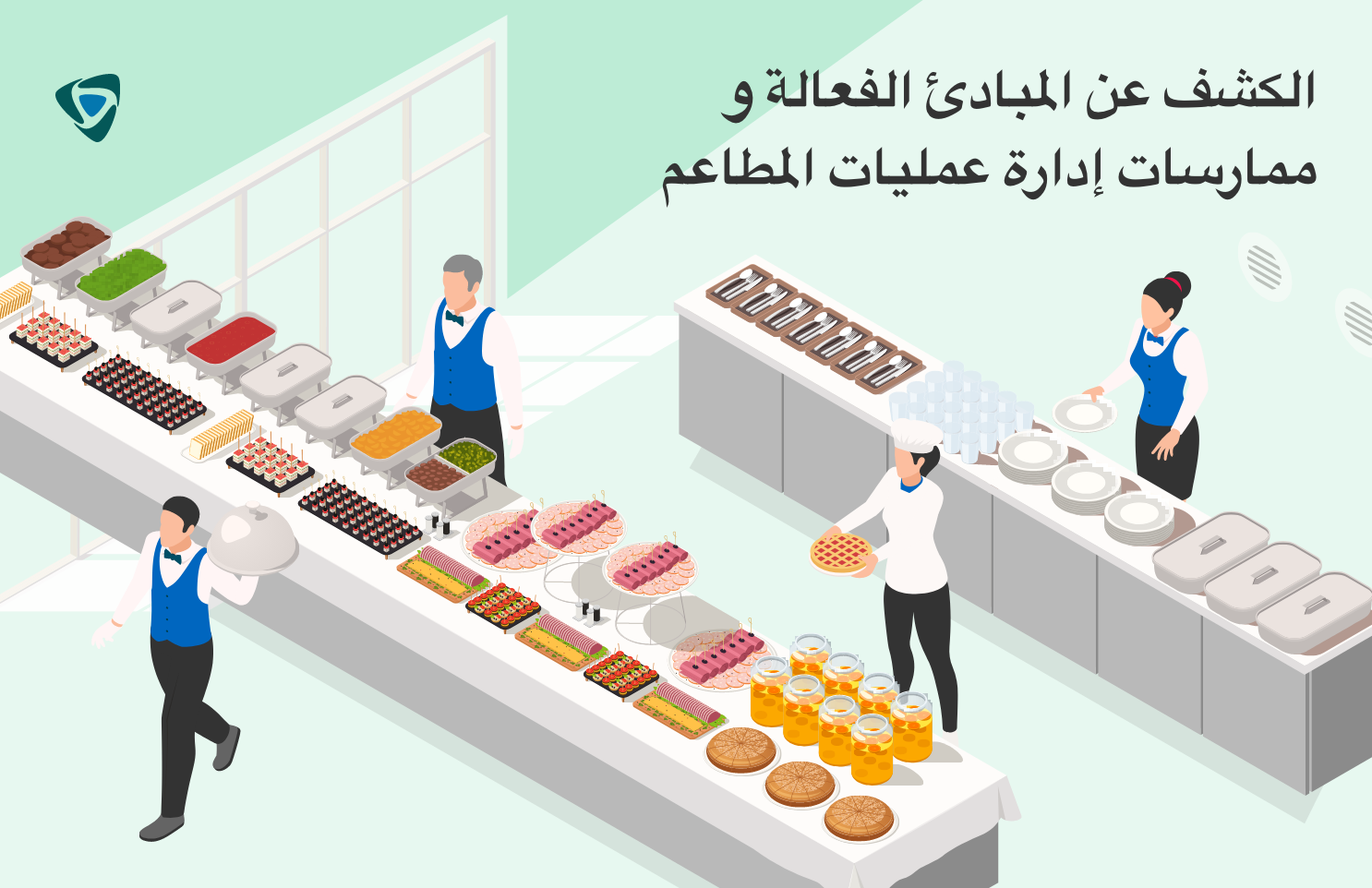Guide
Understand the Intricacies of Restaurant Operations Management?
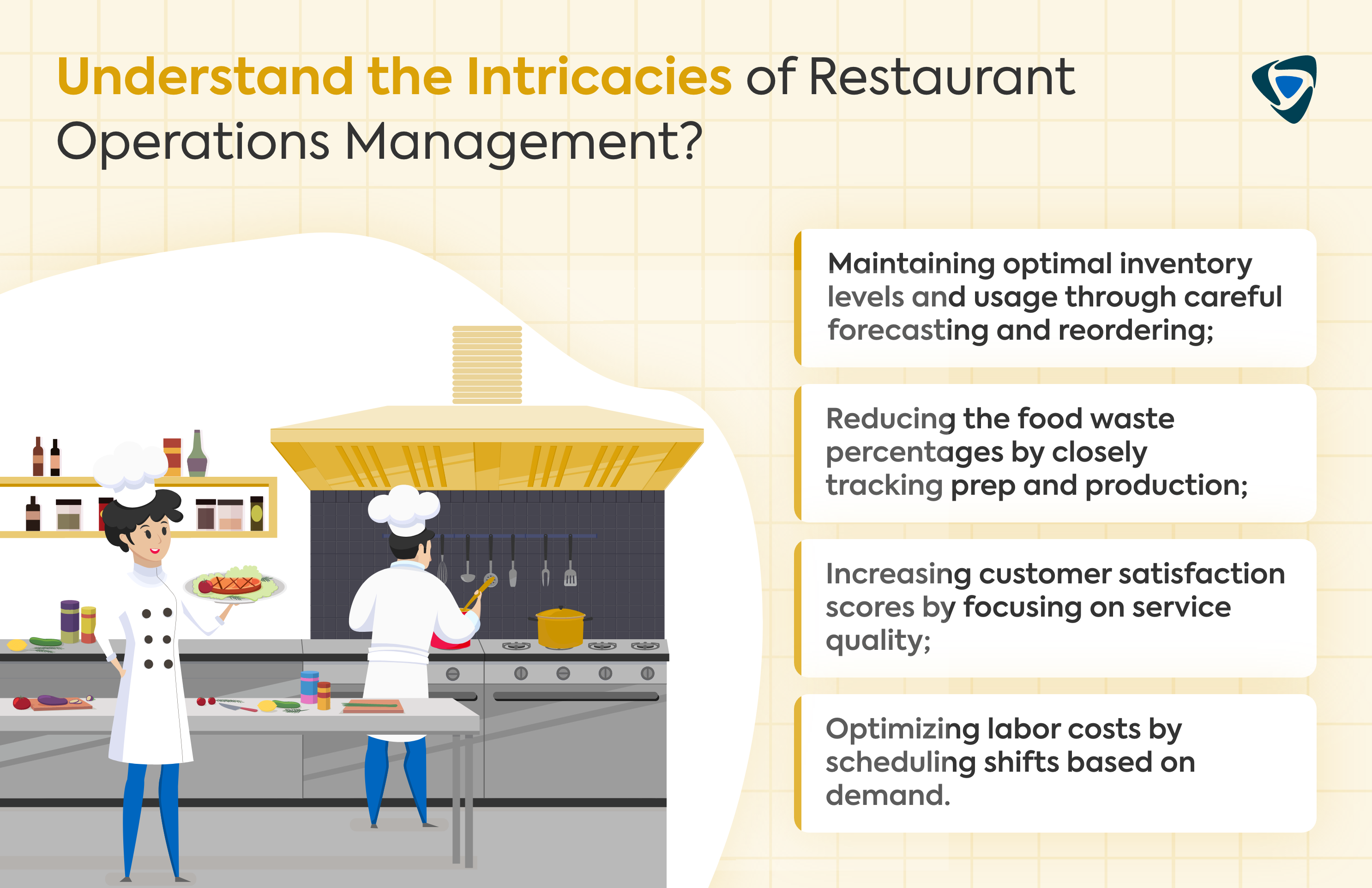
Understanding the intricacies of restaurant operations management is essential to succeed and thrive in this competitive world. Understanding restaurant operations management allows restaurants to use cost control and customer satisfaction tactics to fulfill rising consumer demands without raising expenses.
The National Restaurant Association reports that 45% of operators expect competition to increase in 2024 when the food service sector reaches $1 trillion in revenue.
Beating the competition and driving more sales requires a strong strategy and well-established restaurant operation management (ROM). Restaurant operations management includes purchasing, inventory, building maintenance, personnel scheduling, and quality assurance.
Operations management helps restaurants achieve financial sustainability and long-term profitability. With strategized operation management, restaurants can consistently provide great food and service by coordinating the front and back of the house.
Sustaining profitability in the ever-changing restaurant industry requires the application of best practices throughout purchasing, training, and daily operations. Let’s understand more about restaurant operation management and look at the software that can help to make operations more efficient and manageable.
What is Restaurant Operations Management?
Restaurant Operations Management structures everyday tasks to ensure a restaurant’s smooth running.
It oversees inventory management, personnel coordination, financial control, kitchen operation optimization, and strict food safety and quality requirements.
Restaurant managers fulfill a critical function by executing effective operational strategies and standard operating procedures with the aim of improving diverse facets of the restaurant.
The role of restaurant managers includes a diverse set of responsibilities.
- Maintaining optimal inventory levels and usage through careful forecasting and reordering
- Reducing the food waste percentages by closely tracking prep and production
- Increasing customer satisfaction scores by focusing on service quality
- Optimizing labor costs by scheduling shifts based on demand.
Restaurant managers have entire responsibilities on their shoulders, from hiring and training staff as per standards and creating work schedules to talking to customers about their concerns and ensuring the restaurant operations run smoothly.
A restaurant operation management software takes full charge of restaurant operations, and the features are designed to manage labor reservations and other aspects of operations. The software makes management simple and reduces managers’ headaches.
What is the Goal of Restaurant Operations Management?
You will think that the restaurant is running perfectly if you own a small restaurant business, and there is no need for restaurant operation management. However, the small inefficiencies and errors will multiply and grow once your restaurant business starts growing. That’s when you will require a ROM to keep your business running like a well-oiled machine.
Let’s understand the four important goals of restaurant operation management.
-
Maintaining Optimal Inventory Levels and Usage
Inventory utilization and proper inventory levels are always the top priorities of restaurant operations management. Forecasting is an essential feature to buy goods in the right amounts for events, seasonality, and days of the week.
Improper inventory levels, like overstocking, may raise costs due to increased storage space and degradation. However, understocking may cause client unhappiness, missing sales, and stock-outs.
Inventory management also optimizes usage via first-in-first-out (FIFO) systems, portion control, and waste tracking to save costs. FIFO avoids expiry by using older things first.
-
Ensuring Food Safety and Quality
Customer safety and satisfaction rely on safety and quality requirements. The restaurant operation management overlooks food safety and quality by following the regulatory standards. Let’s understand them.
- Operations managers instruct kitchen staff about safety, sanitation, and hygiene to the kitchen staff.
- Specific work instructions are provided, and posters are well-placed on the walls of workstations.
- Periodic audits and assessments are conducted periodically to identify improvement areas.
- Equipment maintenance, pest eradication, widespread and thorough cleaning, and production planning help to reduce risks and damages.
- Managers oversee the bulk cooking of ingredients and the par-cooking of proteins and condiments. In peak hours, they arrange the workflows such that the temperatures are right for the ingredients to be stored. Cold foods are maintained below 5°C and hot meals above 60°C.
Certifications and HACCP procedures are rigorously followed. The HACCP protocols guarantee that customers get meals of exceptional quality with their meals prepared in the best hygiene environment.
-
Enhancing Customer Satisfaction
Restaurants join back-of-house and front-of-house processes so as to create a uniform dining experience for their customers. It includes staff coordination, which comprises task allocation for waiters, hostesses, bussers, and chefs.
Managers hold briefings with employees to keep customers aware that they are approachable, polite, and concerned enough to attend to their needs promptly and create a comfortable environment. In briefings, managers inform employees of the latest menu items, promotions, and customers’ opinions.
The main purpose is to ensure that customer satisfaction is maintained and remains smooth and pleasurable while the restaurant processes are going on. It increases customer retention and viral marketing.
-
Improving Profitability and Efficiency
Another major goal of restaurant operation management is effective financial planning and cost management, which boost efficiency and drive profitability. Operation managers track average check size, food costs, labor costs, and revenues daily, weekly, or monthly. They identify trends, seasonality adjustments, and periods of poor performance to optimize budgets.
The objective is to maximize profits while minimizing operating expenses through waste prevention and process optimization.
Managers identify superfluous expenditures that fail to enhance the consumer experience or improve financial performance. Besides, consistent maintenance also averts costly repairs and operational interruptions.
How to Improve Restaurant Operations Management?
Improving restaurant operation management is an ongoing task. There is no particular strategy that will work for every restaurant business. It is a hit-and-trial effort, and consistency to improve the operations is the key to ensuring the seamless running of the business.
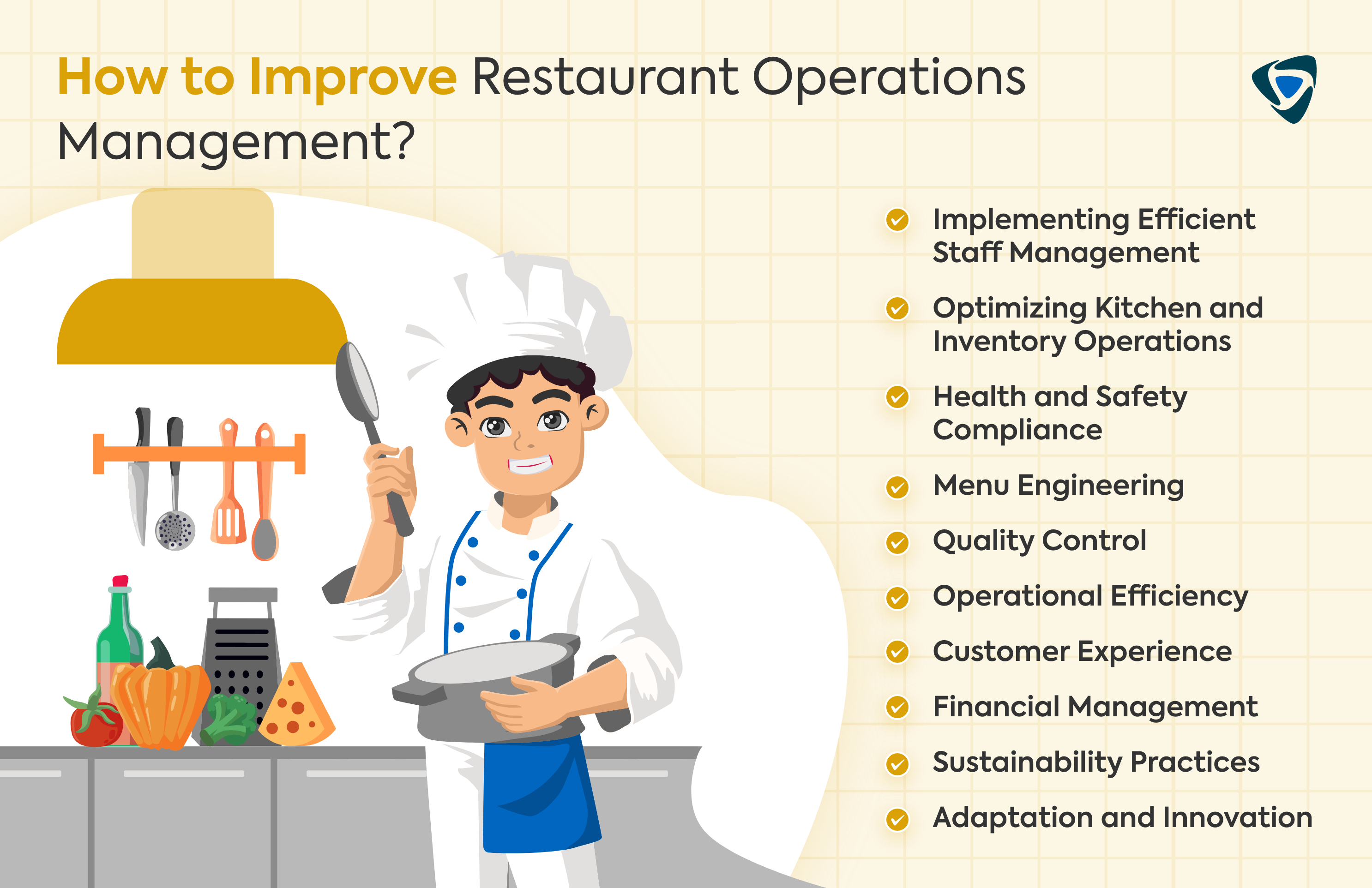
While there is no sure-shot strategy, there are different areas of restaurant operation management that need to be monitored. Let’s take a look at them.
Implementing Efficient Staff Management
Efficient staff administration is critical for ensuring seamless operations within the bustling setting of a restaurant.
Investing in user-friendly automated restaurant staff management software can assist managers in streamlining complex scheduling, enhancing communication channels, simplifying payroll administration, and increasing overall efficiency.
Well-managed staff with clear roles is important to meet company goals and provide excellent customer service.
Optimizing Kitchen and Inventory Operations
Optimizing inventory and kitchen management procedures is essential to ensure seamless coordination between the front and back of the house. A well-established kitchen environment revolves around responsibility, cooperation, and openness among the culinary staff.
Food costs are managed more effectively when waste is minimized. It can be done by keeping a vigilant oversight of perishable and non-perishable stock levels, expiration date tracking, and refinement of purchasing schedules and production plans.
Implementing a comprehensive operations manual that standards recipes, plating procedures, preparation methods, and cleansing processes is essential to maintain uniformity.
Menu Engineering
It is essential to create a profitable and aesthetically pleasing menu in order to increase sales and reduce expenses. It assesses pricing, ingredient costs, portion sizes, and best-selling, profitable products.
The menu’s design should reflect local preferences and trends while maintaining an acceptable food cost percentage. Operations managers must monitor the efficacy of individual menu items continuously. Using sales data facilitates the identification of poor-performing food items that require modification or replacement.
Limited-time offers and test promotions help in the introduction of new varieties and the mitigation of associated risks. Additionally, the menu must be updated periodically to reflect the seasons and maintain its freshness.
Quality Control
Consistency in plating and presentation, as well as food quality, is another critical factor for meeting consumer expectations. Sticking to the standard recipes and portioning guidelines will avoid wastage and keep your customers happy. Quality control procedures consist of audits, temperature checks, and flavor evaluations to meet the quality guidelines.
Effective communication with employees regarding the standards ensures that everyone is updated on the regulations that need to be followed. Stationary checklists and order verification systems help to reduce errors. Adherence to scheduled thorough cleansing and equipment maintenance protocols guarantees sustained quality.
Operational Efficiency
Operational efficiency is an essential factor when restaurants wish to increase productivity, reduce expenses, and elevate the overall customer experience. Restaurants can increase service speed and decrease redundancies and waste by optimizing their workflows and processes.
One must analyze floor plans to determine the most suitable configurations for tables, seating, and server coverage zones in order to enhance operational effectiveness. Floor plans should be devised in a manner that eliminates obstacles and facilitates seamless movement of servers between the dining and culinary areas. Sections should also be balanced based on server duties.
Table management constitutes an additional pivotal approach to enhancing operational effectiveness. By implementing table rotation sequences, monitoring turn times, and coordinating server handoffs, peak-hour table turns can be completed more quickly.
The effectiveness of a kitchen is dependent on station organization, layout, and robust equipment. Standardized recipes, plating guidelines, and preparation schedules facilitate the workflow in the kitchen. Food preparation and inventory management should emphasize appropriate storage, expiry systems, and waste reduction.
Customer Experience
A favorable dining experience and superior customer service are fundamental to any restaurant’s success. The customer experience comprises all interactions that occur throughout the customer’s restaurant journey, from entering the restaurant to settling the bill and stepping out.
Establishing a pleasant and hospitable atmosphere while delivering timely and attentive service is essential. An adequately trained staff should possess a thorough understanding of the available menu choices and be capable of offering suggestions tailored to the consumers’ preferences.
Effectively managing reservations and wait times further enhances the overall experience by reducing the waiting times. An individual’s table settings, furnishings, decor, music, and illumination all contribute to the ambiance. Guests prefer to unwind and savor their meals in a dining area that is cozy, spotless, and properly maintained. Around 38% of customers choose their favorite restaurant based on the overall customer experience, including atmosphere, employee, and convenience, according to the Vixxo Restaurant Survey.
The food’s presentation and quality are also critical components of the consumer experience. Fresh food, properly garnished and presented at the right temperature, delights diners.
Financial Management
Effective financial management and supervision are critical components in guaranteeing long-term profitability and viability for any restaurant enterprise. Implementing stringent budgeting, forecasting, and cost control procedures concerning labor, inventory, and daily operations is essential.
Pricing strategies must be meticulously designed to maximize profit margins while maintaining competitiveness, considering factors such as projected ingredient costs, demand patterns, and competitor benchmarking. Expenditures, daily and weekly sales performance, and key performance indicators such as revenue, variable/fixed costs, and labor cost percentage should be diligently monitored.
Consistent examination of integrated P&L statements, cost reports, and balance accounts yields insights grounded in data, which can be utilized to discern opportunities for enhancement. Priorities include disciplined performance management and long-term financial planning.
Health and Safety Compliance
Maintaining rigorous standards of food safety and sanitation is an absolute necessity for dining restaurants. All operations and procedures must adhere to the relevant health regulations and rules.
Establishing robust protocols encompassing ingredient procurement, storage, food preparation, service, presentation, and facility maintenance is imperative. Employees must complete comprehensive training and obtain certification in secure food handling before being granted their duties.
Consistent inspections and proactive upkeep of facilities, laboratories, and equipment help in the detection and reduction of potential hazards. Ensuring adherence to health codes satisfies legal requirements and protects the welfare of both employees and guests.
Sustainability Practices
As companies committed to upholding values, restaurants ought to proactively incorporate environmentally sustainable, morally upright, and socially accountable practices. Food waste should be measured, monitored, and minimized via recycling, portion control, and meticulous production planning as part of sustainability initiatives.
Around 68% of diners say that restaurants should have strategic processes in place to avoid food wastage, as per the Food Navigator Europe 2022 report. According to the same research, 56% of consumers choose restaurants with eco-friendly packaging over single-use plastic.
Buying from local farmers and producers ensures food freshness. Prioritize sustainable, fair-trade, and organic materials when buying.
Adaptation and Innovation
Restaurant enterprises must consistently adapt and maintain agility to accommodate shifting consumer preferences and emergent technologies. One can identify innovative menu options to stimulate and attract new guests by conducting competitor analysis and monitoring the most recent culinary, consumer, and industry trends.
Technology like contactless payment systems, digital ordering, automated inventory management, and customer analytics boosts sales, efficiency, and visitor satisfaction. Innovative thinking and quick adaptation to external developments may maintain a competitive edge and boost reputation.
Software for Restaurant Management
Let’s look at some restaurant operation management software that will make handling and managing the operations seamless.
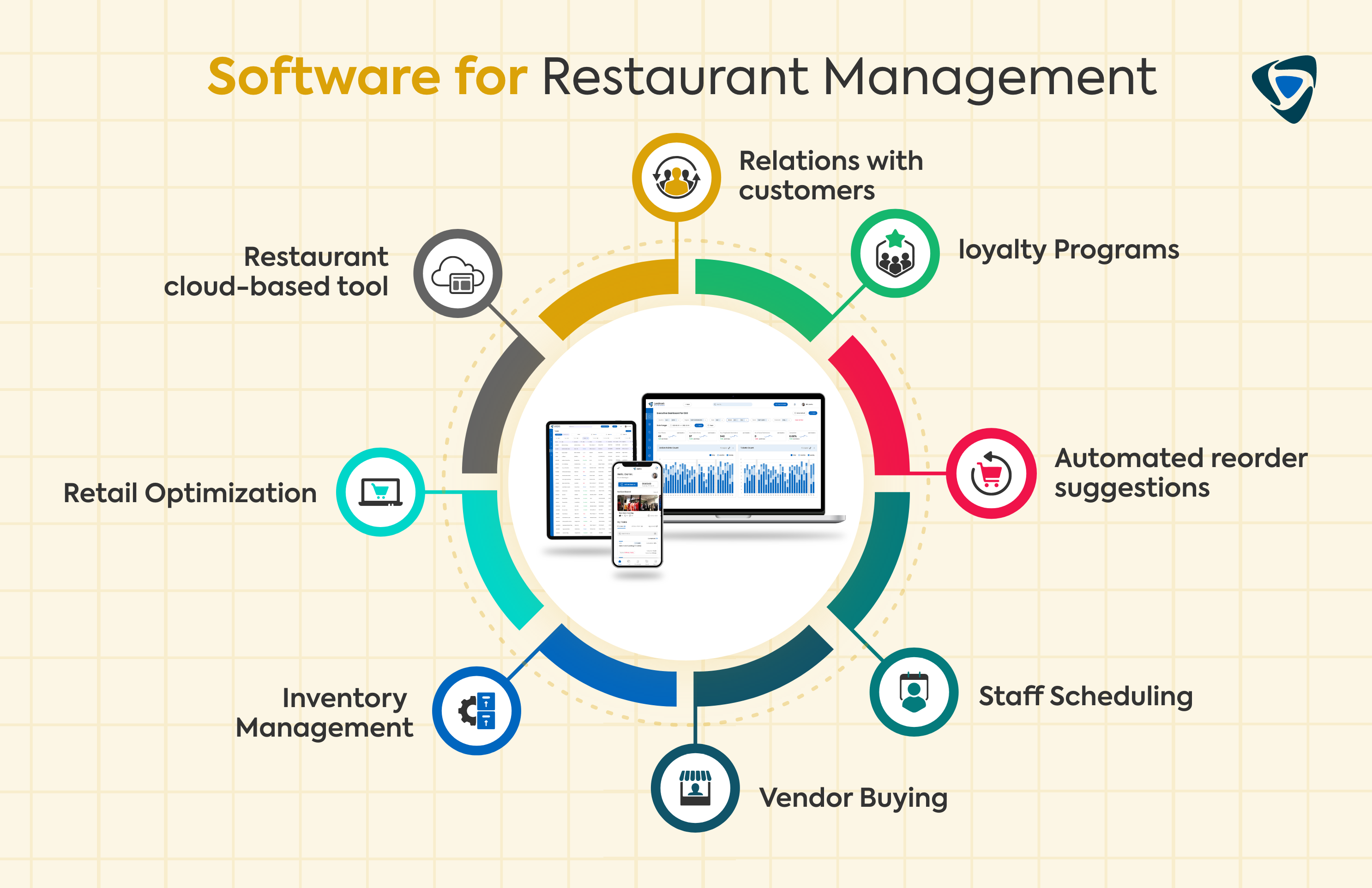
Tactics is a unique cloud-based tool for restaurant and retail optimization. It includes features for inventory management, vendor buying, staff scheduling, customer relationship management, loyalty programs, and more on a single platform. The key features include automated stock reorder suggestions, employee shift planning, and sales performance tracking.
UpMenu provides restaurants with an integrated website builder and backend tools for streamlining operations. Its online ordering system, dynamic menus, and CRM capabilities help engage customers. On the operations side, UpMenu enables stores to manage inventory, ingredient costs, vendor ordering, staff management, and reservations seamlessly.
SimpleOrder focuses on core restaurant management functions – POS, vendor and inventory management, staff scheduling, and cost control. It provides recipe management, food cost calculation, and nutritional information. The system tracks inventory levels in real time and automatically orders stock.
Restaurant365 offers operations management for restaurants. It integrates accounting, inventory, staff scheduling, vendor orders, customer loyalty, gift cards, and analytics for restaurants. The software aims to improve efficiency and business intelligence.
Wrapping up,
Restaurant operators seeking to simplify, save expenses, and boost profits should prioritize operations management. Data-driven planning, inventory control, staff scheduling, and customer experience management are essential to ensure the smooth running of the restaurant business.
Leveraging restaurant management software and technologies can optimize workflows and add accountability. While every restaurant must customize its approach based on concept and capabilities, the fundamentals remain consistent – maximize productivity, deliver exceptional dining experiences, and make smart data-backed decisions.
 Schedule A Demo
Schedule A Demo 


